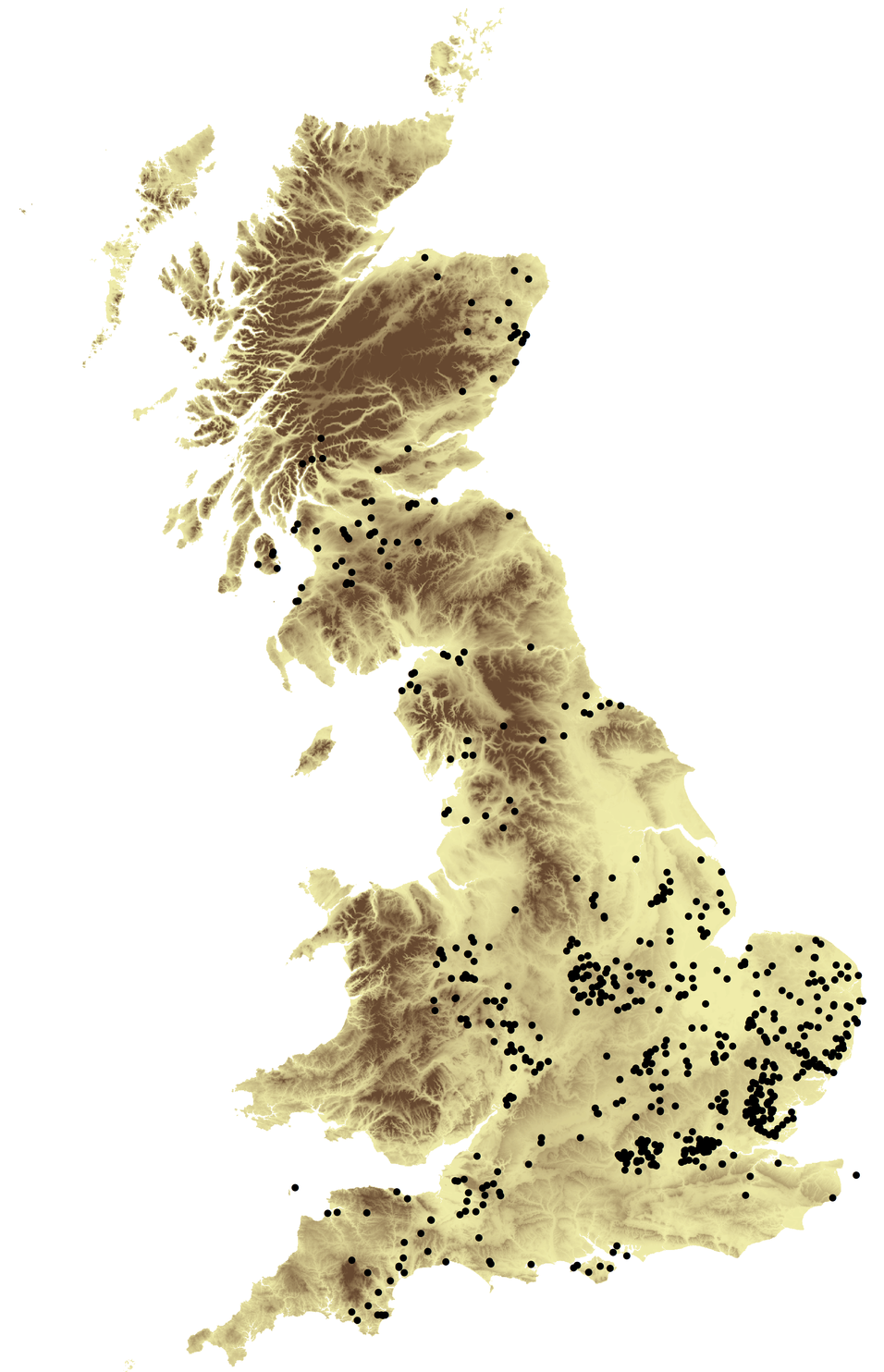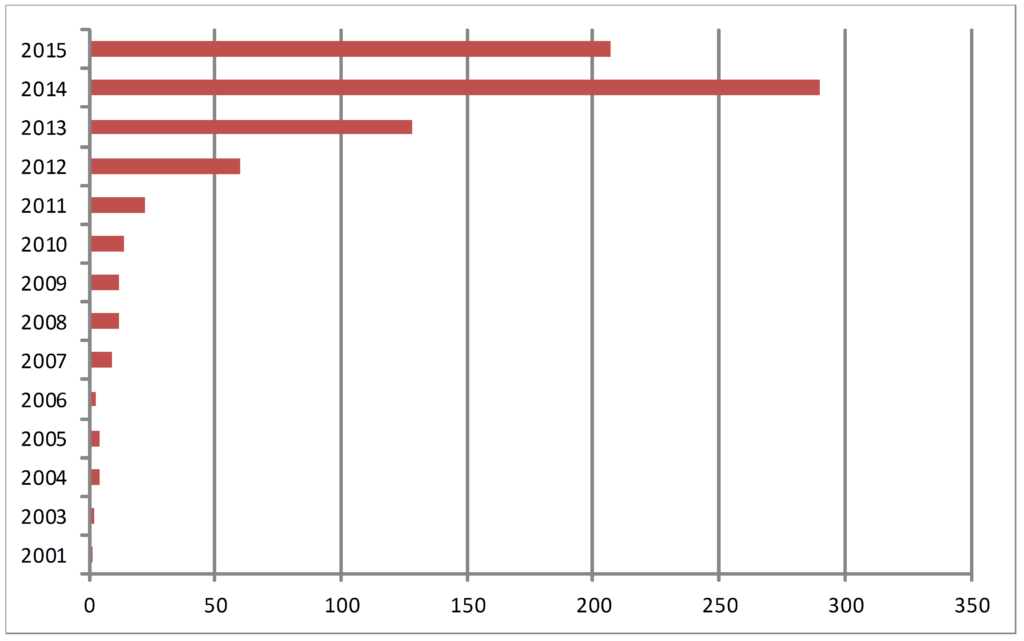Over a year and a half ago I wrote a short blog on the mechanics of the ADS grey literature library, going in to (what I considered) fascinating detail on the technical considerations of archiving the reports we host online. In the intervening period since that blog I’ve spent a large portion of my time working on the Roman Rural Settlement of Britain project, and an array of what we term special collections (for example Stones of Greece, Origins of Nottingham and Parks and Gardens). Colleagues such as Jenny O’Brien and Georgie Field have primarily been responsible for transferring reports into the library and as such, some distance has crept into the relationship between myself and the library. Like an old friend to whom one hasn’t spoken for sometime, one starts to wonder as to whether the links and shared experiences will persevere.
Thus when I was asked to do the update for September/October there was a frisson of excitement and uncertainty. Would the library and myself still click, or would we be left making uncomfortable small-talk by the digital equivalent of the platter of mushroom vol-au-vents? Fortunately we still had much in common, and the hours quickly flew by as old memories resurfaced (“What to do with CorelDraw files?”) and new challenges presented themselves (“PDF/A 1 or A/2?”). I’ll save those tasty intellectual morsels for another blog.
Over the last fortnight I’ve released just under 800 new reports into the library; a testament to the contributions made by those completing the forms and the validating staff at local HERs and relevant national records. In addition, the reports themselves tell us a bit about how OASIS is used, who’s using it and the types of records within. I thought it interesting to briefly reports back on these, as a snapshot of the standard OASIS workflow.

As the map above shows there are clear concentrations of records – a consequence not only of respective levels of fieldwork but also the uptake of the OASIS form by local authorities and fieldworkers. An additional factor is also the workflow of particular organisations, whereby even a two month gap between transfers from OASIS (our typical break between efforts) is not including projects are waiting to be completed and validated. These are all fascinating (but also frustrating) insights into how the current iteration of OASIS does and does not work for the recording of events within the historic environment. This is something my colleague Jo Gilham is currently hard at work investigating as part of the proposed re-design of the OASIS system. To dwell on the positive, what can be seen in the areas where the use of the form is widespread, such as East Anglia, the levels of digital reports being produced and released online is significant. As an aside, it should be noted that the two dots in the sea (off North Devon and Kent) are actually correct grid references: for surveys of wrecks of the South Australian and Rooswijk respectively. It is great to see OASIS being used for maritime records.
It’s not just the where that’s interesting, but also the who. The mix of people and organisations that have had reports transferred from OASIS in the most recent period is as follows:
| AB Heritage Limited | 1 |
| AC archaeology Ltd | 6 |
| Access Cambridge Archaeology | 2 |
| Addyman Archaeology | 3 |
| Albion Archaeology | 10 |
| Allen Archaeology Ltd | 14 |
| AOC Archaeology | 9 |
| Archaeological Building Recording Services | 1 |
| Archaeological Project Services | 19 |
| Archaeological Research Services | 1 |
| Archaeological Services University of Durham | 2 |
| Archaeological Services WYAS | 3 |
| Archaeological Solutions Ltd | 26 |
| Archaeological Surveys Ltd | 2 |
| Archaeology Service Shropshire County Council | 32 |
| Archaeology South East | 13 |
| ArchaeoPhysica Ltd | 2 |
| ArcHeritage | 1 |
| Barry Hillman-Crouch | 3 |
| Border Archaeology | 6 |
| Britannia Archaeology Ltd | 15 |
| Cambridge Archaeological Unit | 2 |
| CFA Archaeology Ltd | 21 |
| Chris Birks | 1 |
| Chris Butler Archaeological Services | 1 |
| Clwyd-Powys Archaeological Trust | 4 |
| Colchester Archaeological Trust | 28 |
| Connolly Heritage Consultancy | 1 |
| Context One Archaeological Services | 3 |
| Cotswold Archaeology | 33 |
| Dennis Payne Archaeological Services | 6 |
| Dr Philip R Rowe | 2 |
| ECUS ltd | 3 |
| Essexy Council Field Archaeology Unit | 19 |
| Field Archaeology Specialists Ltd. | 1 |
| Geophysical Surveys of Bradford (GSB Prospection) | 1 |
| Greenlane Archaeology Ltd | 4 |
| GUARD Archaeology Limited | 8 |
| Hampshire and Wight Trust for Maritime Archaeology | 1 |
| Headland Archaeology Ltd | 12 |
| Heather Wallis | 2 |
| Heritage Network | 6 |
| Independent Archaeology Consultants | 3 |
| Jacobs Engineering UK | 1 |
| John Moore Heritage Services | 5 |
| John Newman Archaeological Services | 29 |
| JPS Heritage Services | 1 |
| MOLA Northampton | 14 |
| Murray Archaeological Services Ltd (MAS) | 14 |
| Museum of London Archaeology | 8 |
| NAU Archaeology | 13 |
| North Pennines Archaeology Ltd | 1 |
| Norvic Archaeology | 7 |
| Oakford Archaeology | 5 |
| Oxford Archaeological Unit | 7 |
| Oxford Archaeology East | 5 |
| Oxford Archaeology North | 6 |
| Pre-Construct Archaeology (Lincoln) | 18 |
| Pre-Construct Archaeology Ltd (London) | 89 |
| Rathmell Archaeology Ltd | 26 |
| Ric Tyler | 2 |
| Souterrain Archaeological Services Ltd | 3 |
| South West Archaeology | 9 |
| Stephen Haigh (Buildings Archaeologist) | 2 |
| Stratascan Ltd | 10 |
| Suffolk Archaeological Field Group | 2 |
| Suffolk Archaeology | 10 |
| Suffolk County Council Archaeological Service | 15 |
| Swaledale and Arkengarthdale Archaeology Group | 2 |
| Terrain Archaeology | 5 |
| Thames Valley Archaeological Services | 36 |
| Trent & Peak Archaeology | 7 |
| University of Leicester Archaeological Services (ULAS) | 41 |
| Wardell Armstrong Archaeology | 9 |
| Wessex Archaeology | 29 |
| Worcestershire Archaeology | 4 |
In this list there are the usual organisations that traditionally upload large levels of material such as ULAS, TVAS and Cotswold Archaeology. In addition there are also smaller, yet equally significant contributions from a range of individuals and smaller units, especially buildings archaeologists. Over time this soon builds up, for example Stephen Haigh has nearly 150 reports submitted over the years. It’s also great to see non-contractors such as the Swaledale and Arkengarthdale Archaeology Group and Suffolk Archaeological Field Group using the form.
As the chart below shows, the date of reports being released is predominantly recent, although with a marked number from 2014 and 2013. This may indicate a delay in the system as users complete records, and the relevant HER and national record validate and sign them off, as well as a delay in the ADS transferring reports (as noted above, this is generally undertaken every two months). Even considering the numbers from 2014 and earlier, I think it’s justified to look at the positive side of this and highlight the fact that a large level of reports have been written and made publicly accessible in short-time (i.e. produced in 2015). This relatively efficient transfer of information from fieldworker/researcher via HER and national record to the public domain is surely something to celebrate for all parties involved.

Finally, it’s also interesting to examine the types of sites recorded within this batch of OASIS reports. There’s surely the basis for an interesting meta-study of monument recording within OASIS, and the real or perceived differences in terms, such as ‘late prehistoric’, ‘Neolithic’ or ‘Early Neolithic’. It would also be interesting to study the types of modern and post medieval sites recorded; are these a consequence of the frequency of events such as building recording (for example see Old Rectory Barns), or the relative frequency of post-medieval features such as the ubiquitous “ditch” or “pit” (for example see Great North Road, Eaton Socon). Alternatively, do some fieldworkers (and HERs) record things differently? I’m sure there’s some PhD or Master research in there somewhere.

Usually at the end of a period of transferring reports, we highlight a geographic and thematic mix of reports that we think may interest our users. I’m always a little reticent to do this, as to me each and every report is of value and I’m loath to pick favorites. However, I’m equally aware that it’s good to showcase the variety within the library, and the quality of reports being produced by both commercial units and local societies. So here’s a quick list of a few reports that caught my eye, please don’t be offended if yours doesn’t feature.
*** Please read these imagining you’re listening to the tune from Pick of the Pops
Building recording at Runwell Hospital, Essex
Survey of a motte and bailey castle at Castle Hills, North Yorkshire
Excavation at a high status early medieval settlement at Rendlesham, Suffolk
Excavation of a Bronze Age ring ditch/cremation cemetery/pit alignment (and Neolithic pits and Roman enclosure) at Park Lane, Castle Donington, Leicestershire
An Archaeological LiDAR study and Walkover Survey at Newtown Linford, Leicestershire
Roman and early medieval occupation Including shell midden!), discovered as part of the Thameslink series of works in London.
A tarmac surface (surely something for the archaeologists of the future) at Fulton Road, Wembley, London
An Iron Age roundhouse and souterrain at Auchrannie Spa Resort, North Ayrshire
A report on submerged palaeo-environments in the southern North Sea
Anyway, I must be off now as a new batch of special collections await. I only hope that my next catch-up with the ADS library isn’t going to be too long. We’ve got so much to talk about.





